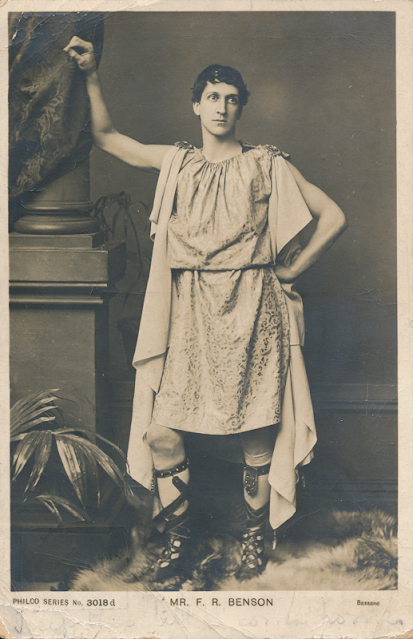In the five days since Christmas Day I have made the rather ridiculous decision to go down to Stratford to see Twelfth Night before it closes on January 18th. I can justify it to myself in lots of ways but it still feels a little self-indulgent. I can't even combine it with an archive trip. But it is calling me back and I know I'd regret it if I didn't go. My friends who live in Leicestershire have already seen it and were really impressed and I am desperate to see Sam West as Malvolio. I received some unexpected money just before Christmas and it seemed like a good way to use some of it. The Wardrobe tours have started up again as well and that is an extra incentive.
So, last night, after much soul searching, I booked a very reasonable hotel - midweek and out of school holidays - a much less reasonably priced train ticket and a bargain seat in the stalls - partial restricted view. I'll only be in Stratford for 24 hours. It will be freezing cold - Stratford is always cold in January and the forecast is grim for the coming weeks - and I won't have the luxury of staying in my little cottage, but having made the decision, the thought of it cancels out all sane logic. I needed something to look forward to once the Christmas festivities are over. And if, as I suspect, 2025 becomes another tough year to navigate, at least I'll have started it with something positive.
There's been very little time to work on the database at all since the start of November - Christmas preparation, other commitments and family illness. Today, I spent the whole day digging into the American newspaper archive again to finish off the hunt for Garnet Holme and discovered a link between him and Henry Herbert, the leading actor of the Benson North (No 2) Company, which added another layer to the story and helped identify another face on the V&A Benjamin Stone photograph. By 1914 he was living in New York and his wife - Gladys Vanderzee -seems to have worked with Holme on several different productions. (My favourite find today was an interesting story about a parrot called Lola who decided she did not want to take part in a play and made her dislike of both Holme and of Mrs Herbert VERY clear...!)






.jpg)


.jpg)






















